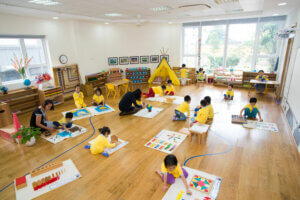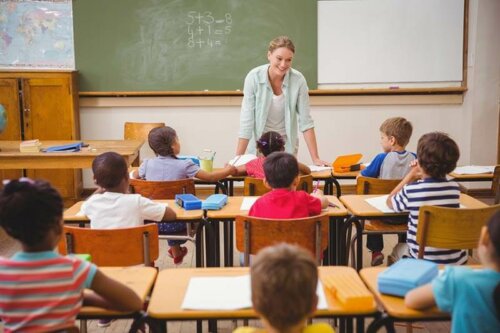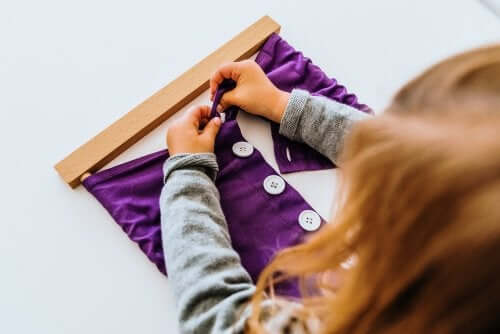Cossettini Pedagogy Method: Learn More

Throughout the history of pedagogy, there have been teachers and professors who’ve had the courage to try to change traditional forms of education. Modern day schools include the ideas and experiences of educators that have demonstrated the importance of connecting school to real life. Today, we’ll talk about one of those teachers by looking at the Cossettini pedagogy method.
Olga Cossettini’s pedagogy isn’t very well known and isn’t widely recognized. However, her method consists of innovative training experiences that have been an important legacy for modern pedagogy.
Who was Olga Cossettini?
Olga was a teacher and pedagogue from Rosario, in the province of Santa Fe, Argentina. She was born in 1898. Under the guidance of her sister Leticia, Olga dedicated her entire life to education and the transformation of traditional schooling. In general, she wanted to change school. Specifically, she wanted to transform it from an environment based on rote learning, punishments, and scoldings. What’s more, she believed it shouldn’t be cut off from the social, labor, and political world.

Within the framework of the New School Theories, Olga Cossettini, in twentieth-century Argentina, took part in and led a great educational project. Her project began to materialize in 1930 with a pilot experience in a school in Rafaela, a city in the province of Santa Fe. The school went by the name Escuela Serena (Calm School) or Escuela Viva (Living School), and its purpose was to give school life a new meaning.
Serena School and the Cossettini pedagogy method
The Cossettini pedagogy method revolved around the child and their potential. In other words, it was based on the idea that children could and should learn many things beyond the encyclopedia. In addition, it focused on using non-traditional methods. Cossettini defended the idea that children should use their imagination, creativity, and their senses to learn.
In addition, Olga paid close attention to both the biology and psychology of the child when developing her method. And, in order to better understand their individuality and personality, she and the students organized very innovative educational experiences.
Also, she wanted to emphasize contact with nature, excursions, and field trips. In Olga’s mind, there was no better way to learn than to visit the local parks and town squares.
In addition, she also organized theater and puppet workshops, as well as hands-on experiences with music, dance, singing, and poetry. With every experience, Olga’s goal was to put her students in contact with their environment.
In doing so, every activity the students did would help them connect to the real world. As a result, children could finally connect their learning to their own lives and family situations.

In general, the Cossettini pedagogy method works to ensure students are living and learning from their everyday lives. And, in their everyday lives, they should be playing games, dancing to beats, and learning to work with one another. In Olga’s words, “it’s about a profound reform of how we think about school, giving it a new spirit, and opening up the doors of our classroom to life.”
Conclusion
In conclusion, the Cossettini pedagogy method’s greatest contribution to education is that it allowed educators to question the theoretical, discipline-based education system. Olga Cossettini wanted to make education student-based and she wanted it to include freedom of thought with real, stimulating situations that foster learning.
Also, you can read many of her ideas, reflections, and educational experiences as an educator in multiple publications and books. That means future pedagogues can learn more about Olga’s innovative educational experiences.
So, as you can see, our current teaching practices have been nurtured by the transformative vision of teachers like Olga. Therefore, today’s children have access to a more comprehensive, lively, active, and complex education. This allows them to actually relate their learning to real life.
Throughout the history of pedagogy, there have been teachers and professors who’ve had the courage to try to change traditional forms of education. Modern day schools include the ideas and experiences of educators that have demonstrated the importance of connecting school to real life. Today, we’ll talk about one of those teachers by looking at the Cossettini pedagogy method.
Olga Cossettini’s pedagogy isn’t very well known and isn’t widely recognized. However, her method consists of innovative training experiences that have been an important legacy for modern pedagogy.
Who was Olga Cossettini?
Olga was a teacher and pedagogue from Rosario, in the province of Santa Fe, Argentina. She was born in 1898. Under the guidance of her sister Leticia, Olga dedicated her entire life to education and the transformation of traditional schooling. In general, she wanted to change school. Specifically, she wanted to transform it from an environment based on rote learning, punishments, and scoldings. What’s more, she believed it shouldn’t be cut off from the social, labor, and political world.

Within the framework of the New School Theories, Olga Cossettini, in twentieth-century Argentina, took part in and led a great educational project. Her project began to materialize in 1930 with a pilot experience in a school in Rafaela, a city in the province of Santa Fe. The school went by the name Escuela Serena (Calm School) or Escuela Viva (Living School), and its purpose was to give school life a new meaning.
Serena School and the Cossettini pedagogy method
The Cossettini pedagogy method revolved around the child and their potential. In other words, it was based on the idea that children could and should learn many things beyond the encyclopedia. In addition, it focused on using non-traditional methods. Cossettini defended the idea that children should use their imagination, creativity, and their senses to learn.
In addition, Olga paid close attention to both the biology and psychology of the child when developing her method. And, in order to better understand their individuality and personality, she and the students organized very innovative educational experiences.
Also, she wanted to emphasize contact with nature, excursions, and field trips. In Olga’s mind, there was no better way to learn than to visit the local parks and town squares.
In addition, she also organized theater and puppet workshops, as well as hands-on experiences with music, dance, singing, and poetry. With every experience, Olga’s goal was to put her students in contact with their environment.
In doing so, every activity the students did would help them connect to the real world. As a result, children could finally connect their learning to their own lives and family situations.

In general, the Cossettini pedagogy method works to ensure students are living and learning from their everyday lives. And, in their everyday lives, they should be playing games, dancing to beats, and learning to work with one another. In Olga’s words, “it’s about a profound reform of how we think about school, giving it a new spirit, and opening up the doors of our classroom to life.”
Conclusion
In conclusion, the Cossettini pedagogy method’s greatest contribution to education is that it allowed educators to question the theoretical, discipline-based education system. Olga Cossettini wanted to make education student-based and she wanted it to include freedom of thought with real, stimulating situations that foster learning.
Also, you can read many of her ideas, reflections, and educational experiences as an educator in multiple publications and books. That means future pedagogues can learn more about Olga’s innovative educational experiences.
So, as you can see, our current teaching practices have been nurtured by the transformative vision of teachers like Olga. Therefore, today’s children have access to a more comprehensive, lively, active, and complex education. This allows them to actually relate their learning to real life.
All cited sources were thoroughly reviewed by our team to ensure their quality, reliability, currency, and validity. The bibliography of this article was considered reliable and of academic or scientific accuracy.
- Serra, M. S. y Welti, E. (2018). La Escuela Nueva en Rosario: Olga Cossettini y la Escuela Serena. EDUCADORES CON PERSPECTIVA TRANSFORMADORA, 39. Recuperado de https://www.flacso.org.ar/wp-content/uploads/2018/11/Libro-completo-Educadores-con-perspectiva-transformadora.pdf#page=40
- Díaz, J. y Serra, S. (2009). Olga y Leticia Cossettini:¿ maestras, mujeres e intelectuales?. Educación, lenguaje y sociedad, 6(6), pp. 233-247. Recuperado de http://www.biblioteca.unlpam.edu.ar/pubpdf/ieles/n06a12diaz.pdf
This text is provided for informational purposes only and does not replace consultation with a professional. If in doubt, consult your specialist.








